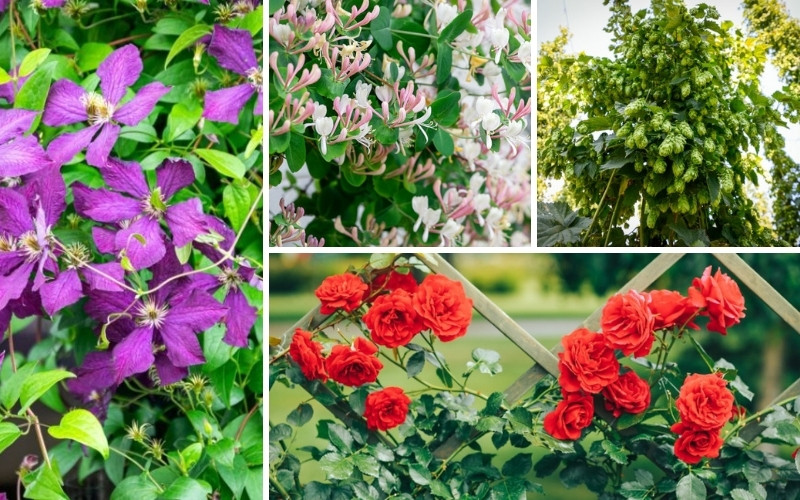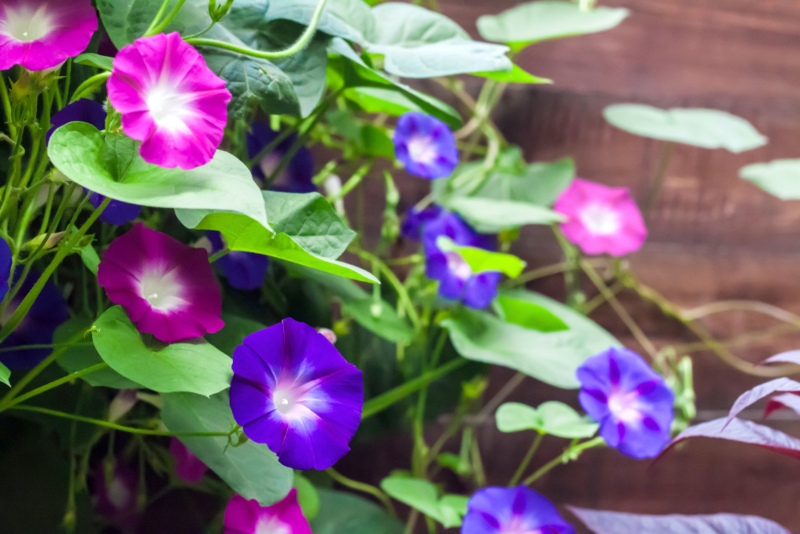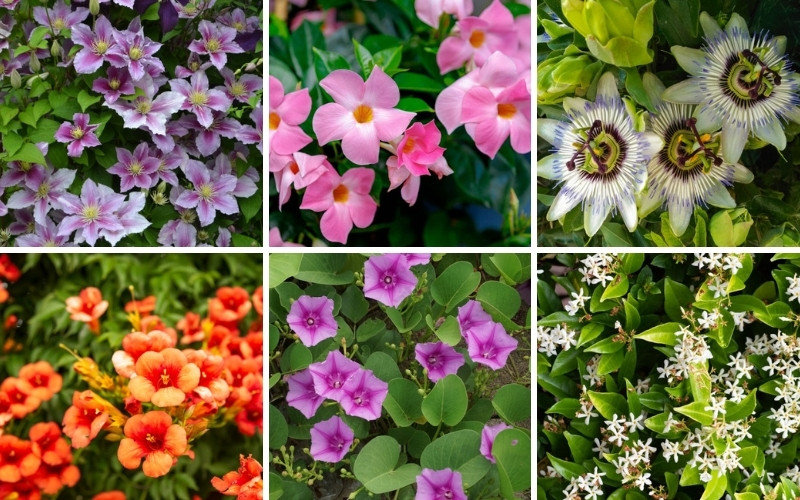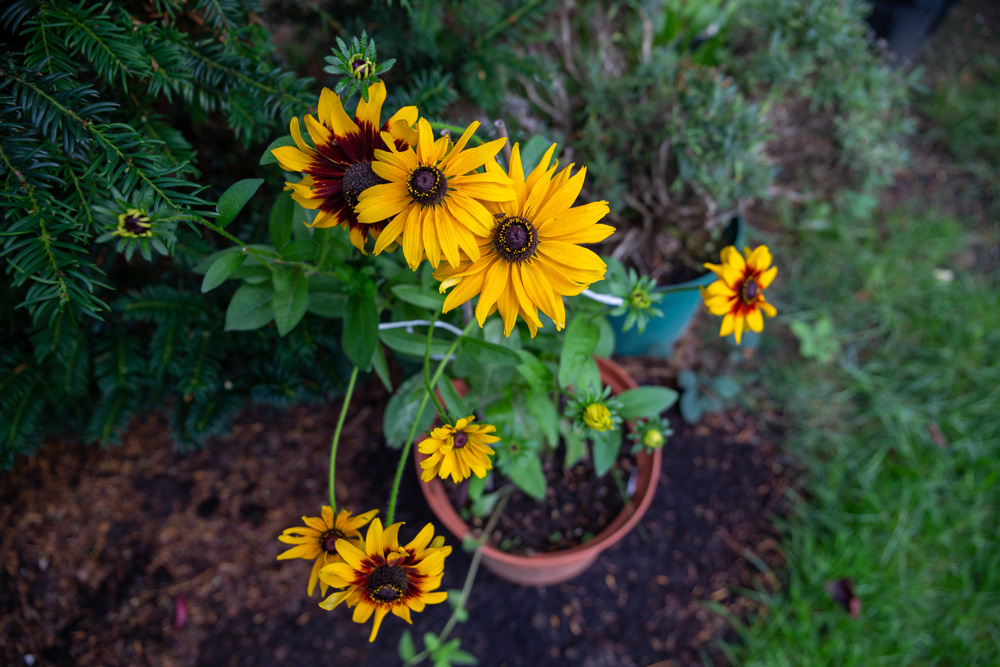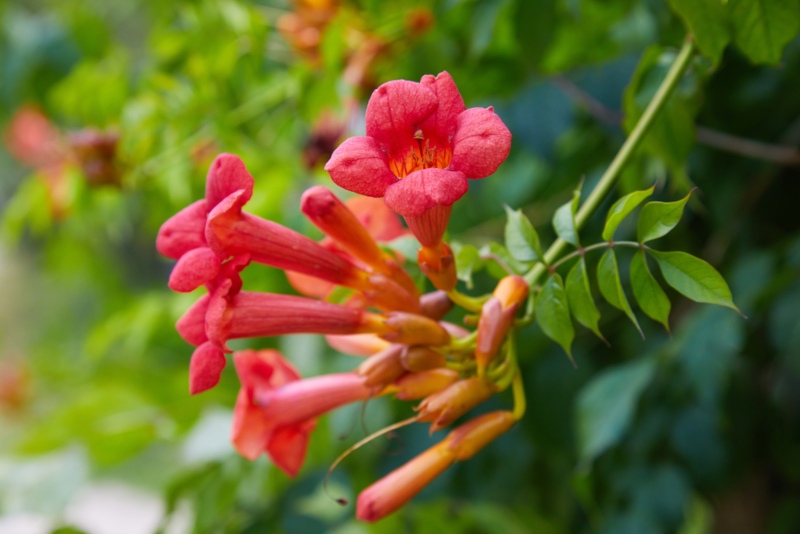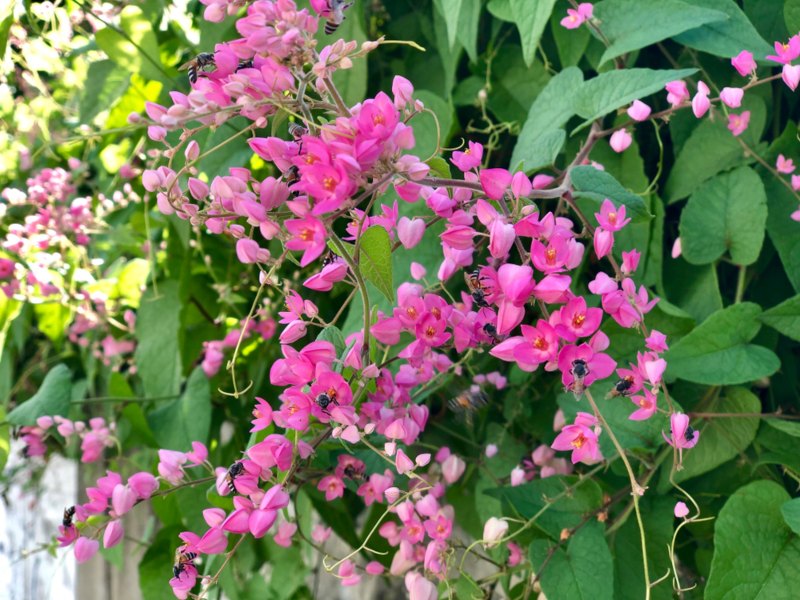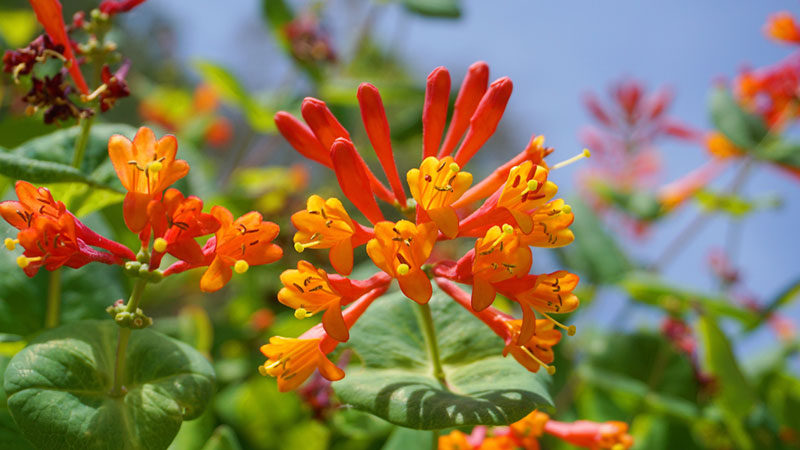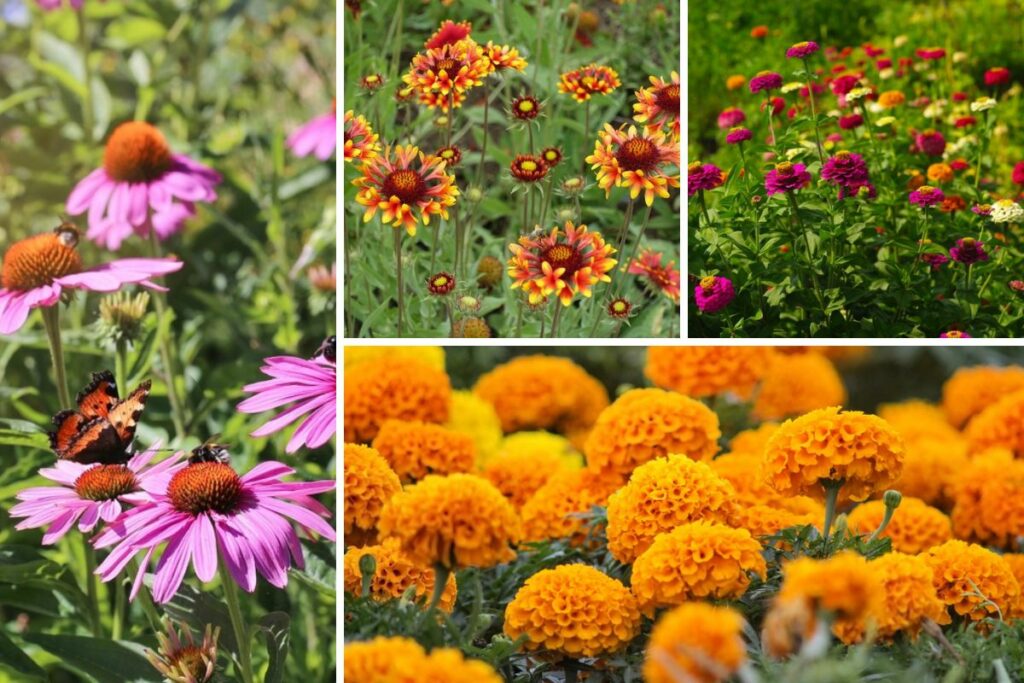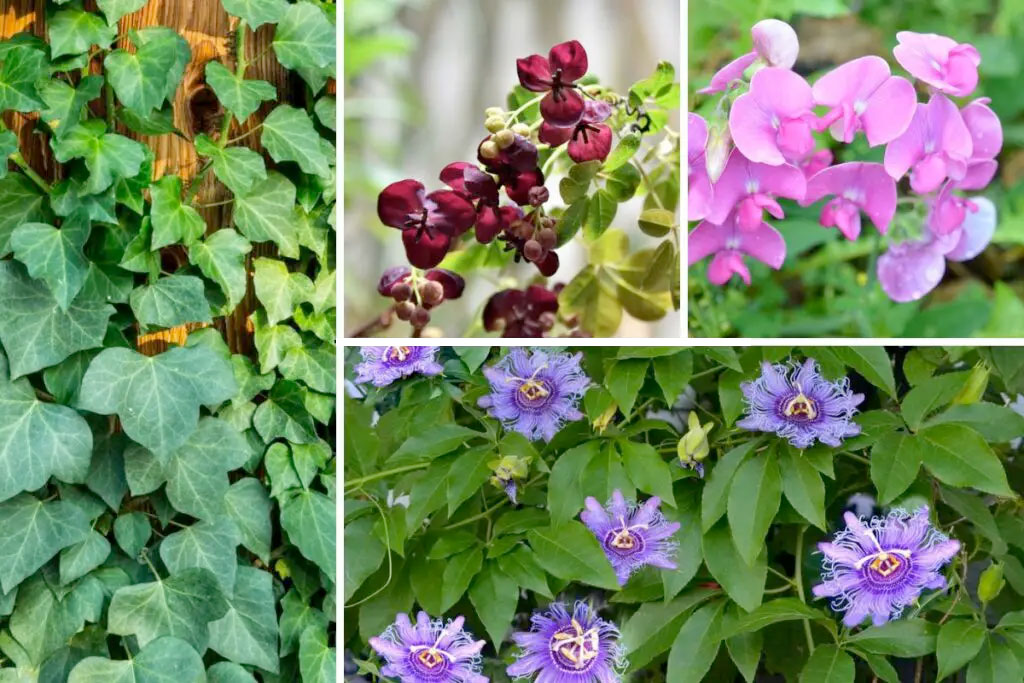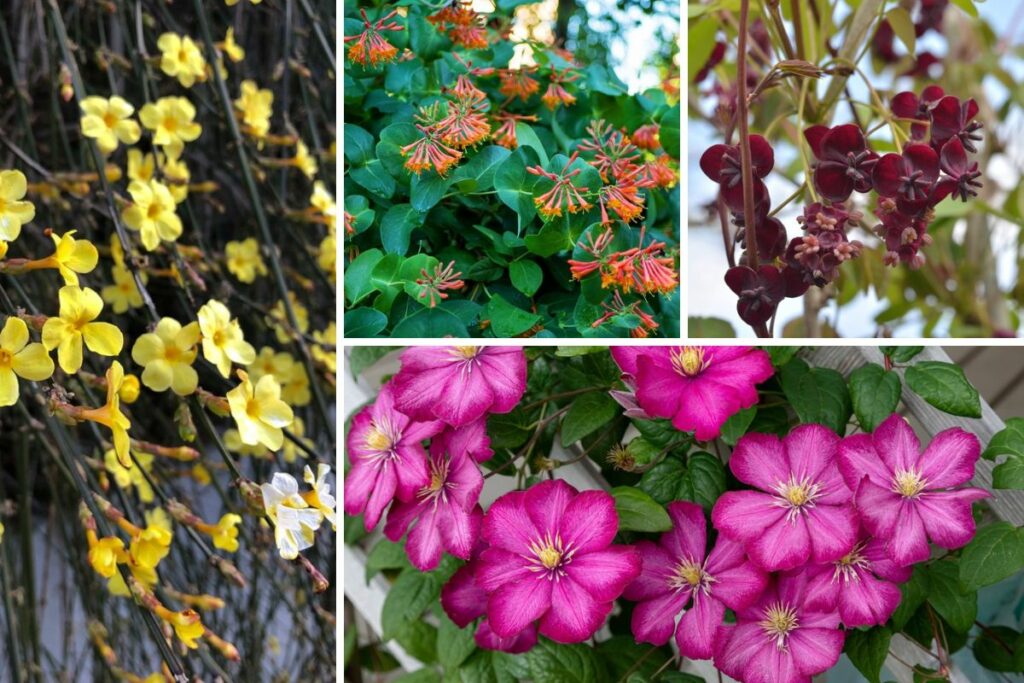
Planting flowering vines can take your garden’s aesthetics to the next level. The problem is that not all plants thrive in similar growth conditions. So, if you’re a North Carolinian houseplant enthusiast looking for flowering vine species to add to your backyard, we’ve got your back.
In this article, we’ll discuss 10 best North Carolina flowering vines to grow, highlighting their characteristics and ideal growing conditions. So, keep reading for all the details!
1. Trumpet Honeysuckle
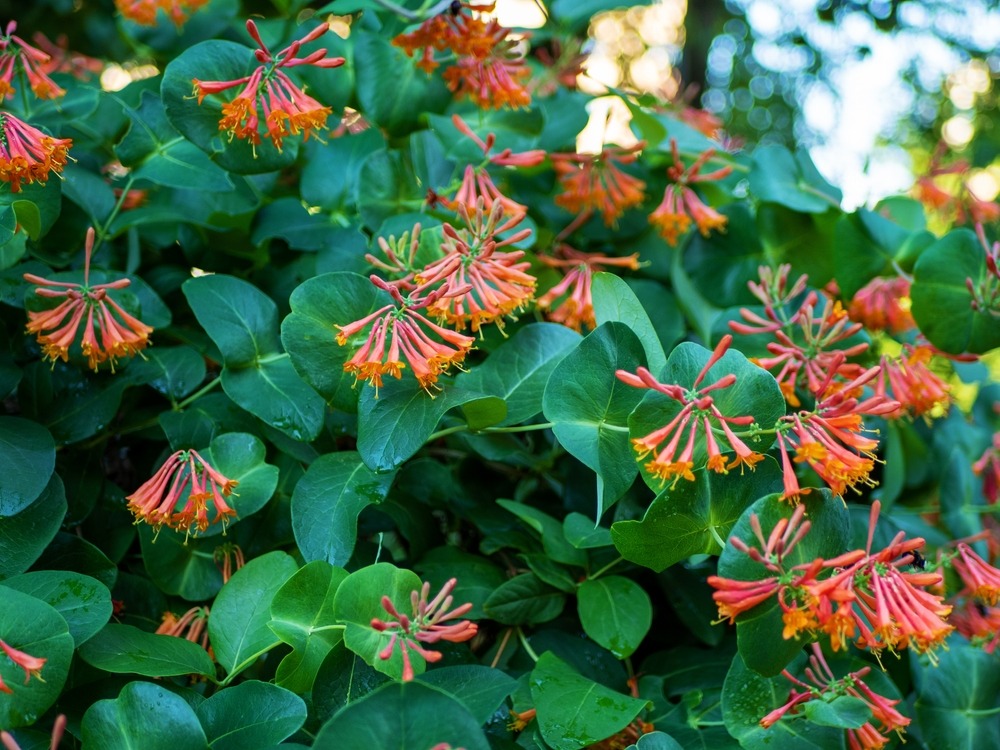
Kicking off the list is trumpet honeysuckle (Lonicera sempervirens), a flowering vine native to the eastern United States. Those plants grow well in hardiness zones 4-9.
Typically, trumpet honeysuckles have a height of 10 to 15 feet. They produce different leaf shapes, ranging from oval to oblong. Leaves below the inflorescence can also fuse, forming a unique shape.
The native eastern US plants bloom in April and May. As the name suggests, they produce narrow, trumpet-shaped flowers with various colors. The petal shades include gold, yellow, orange, red, and burgundy.
Trumpet honeysuckles are low maintenance. Simply plant them in well-draining, loamy soil rich in organic matter. They also prefer acidic soil with a pH of 6-8.
Additionally, expose the plants to 6 hours of direct sunlight and water whenever the soil feels dry.
2. Crossvine
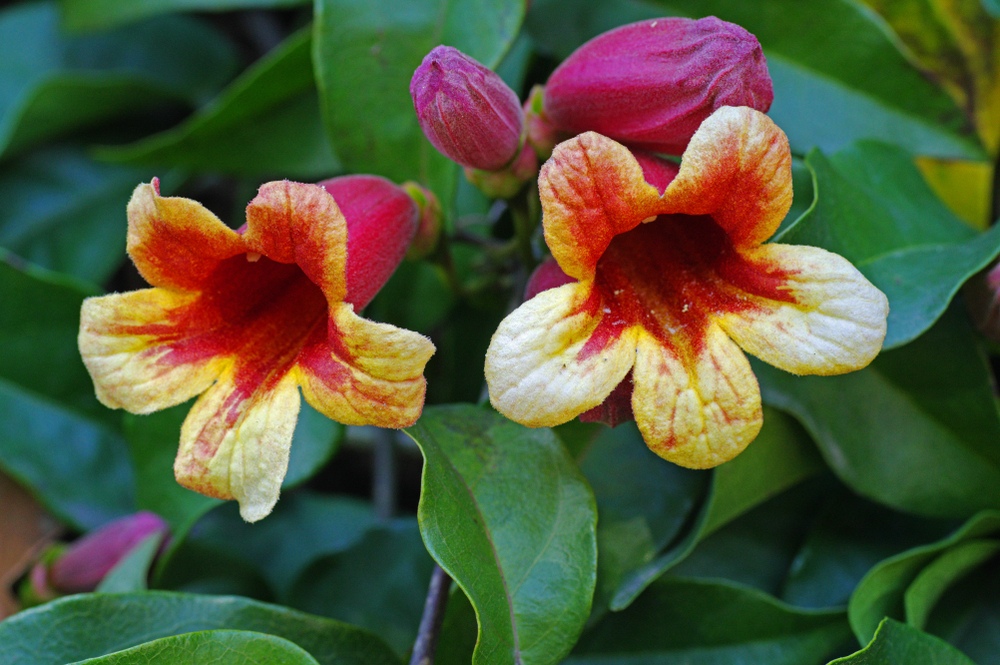
Crossvine, or Bignonia capreolata, is another vine plant that produces trumpet-shaped flowers. Like honeysuckles, crossvines are native to the US. However, they grow in the central and southern regions, thriving in hardiness zones 5-9.
Planting crossvines indoors can be challenging as the plants grow up to 50 feet or more. So, they’re best suited for outdoor gardens.
These native US plants typically have lanceolate or oblong leaf shapes. The foliage color ranges from green to purple.
Flowers bloom in the late winter to early spring and usually grow in clusters of 2 to 5. Crossvine flowers have the same color spectrum as honeysuckles. They also prefer similar growth conditions to the latter plant.
3. Purple Wintercreeper
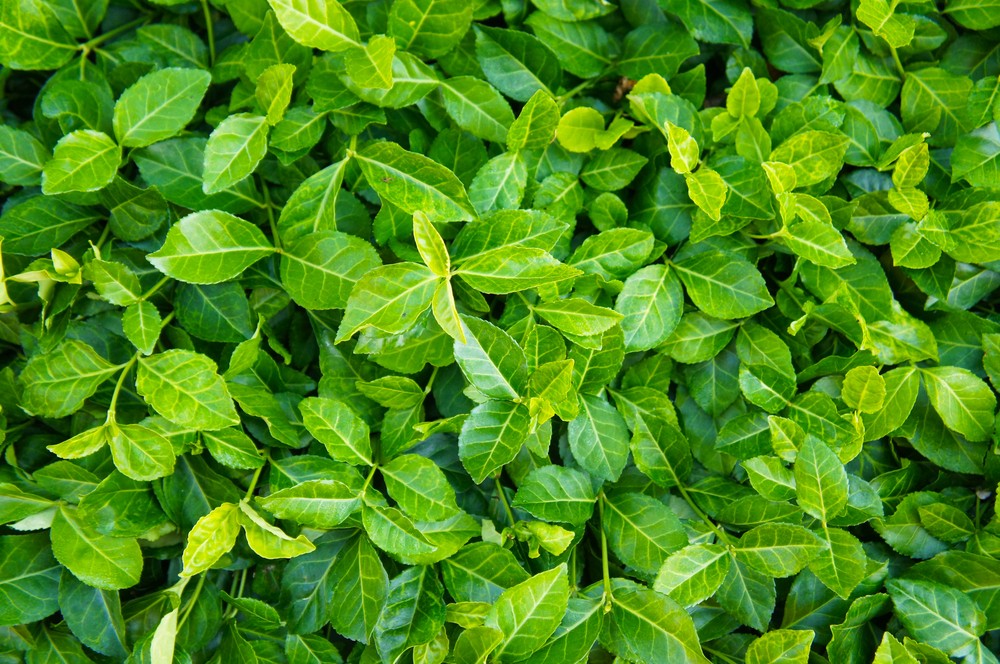
Unlike the above plants, purple wintercreeper, or Euonymus fortunei colorata, is native to east Asia. Typically, those plants thrive in hardiness zones 4-9.
The trailing vine naturally grows as ground cover in forests, spreading 1 to 3 feet. However, they reach 66 feet long if properly supported. They produce elliptical and ovate foliage. The leaf color is dark green and turns dark purple or lavender in the winter.
Star-shaped flowers typically bloom in the spring. However, they’re usually sparsely distributed along the stem. Plus, they’re less than an inch long and have a greenish-white color.
Purple wintercreepers are hardy, tolerating poor soil and drought. They thrive in full sun to partial shade and well-draining, loamy soil rich in nutrients. However, they can grow in slightly sandy soil.
4. Winter Jasmine
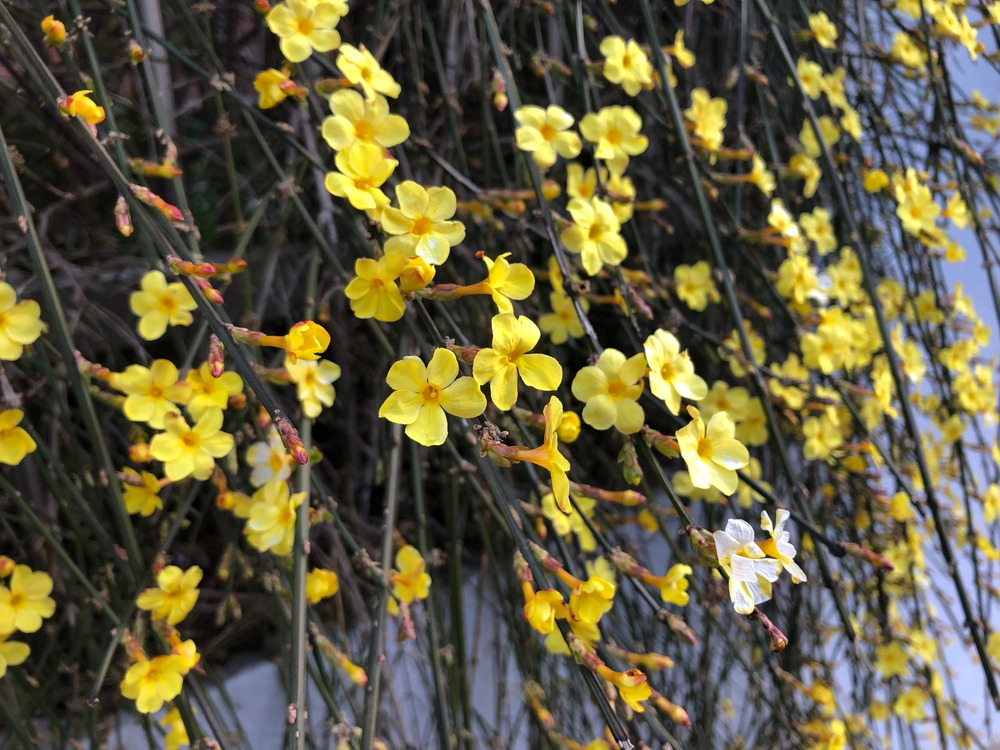
Winter jasmine (Jasminum nudiflorum) is a medium-sized shrub that usually grows up to 4 feet tall. However, those plants have slender stems resembling vines. If supported like climber plants, winter jasmines can reach 10 to 15 feet in height.
The flowering shrub is native to China and suitable for growing in hardiness zones 6-10. Typically, those plants have dark green leaves. Each leaf consists of three oval or oblong leaflets.
Winter jasmine blooms in January and February—even before leaves emerge! As the name implies, they produce jasmine flowers with bright-yellow colors. However, those attractive jasmines are non-fragrant.
The cultural conditions of those vine-like shrubs are pretty similar to the above plants. They thrive in full sun to partial shade and prefer well-draining, moist soil. You can also feed the plants slow-release fertilizers in the spring to support excessive flower growth.
5. English Ivy

Hedera helix, commonly known as English ivy or just ivy, is a woody vine native to Europe and Scandinavia. They grow well in hardiness zones 4-13, especially at temperatures between 70ºF and 90ºF.
When grown outside, English ivy can reach 80 feet tall. Typically, those plants produce dark green to white variegated palmate leaves. They bloom in the fall and summer. However, like winter creepers, they bear insignificant greenish-yellow flowers that are less than 1 inch in size.
To grow Hedera helix plants, expose them to full sun for 6 hours and partial shade for the rest of the day. An indoor potting mix would be fine for the plants to flourish as they tolerate various soils and pH levels.
6. Carolina Jessamine
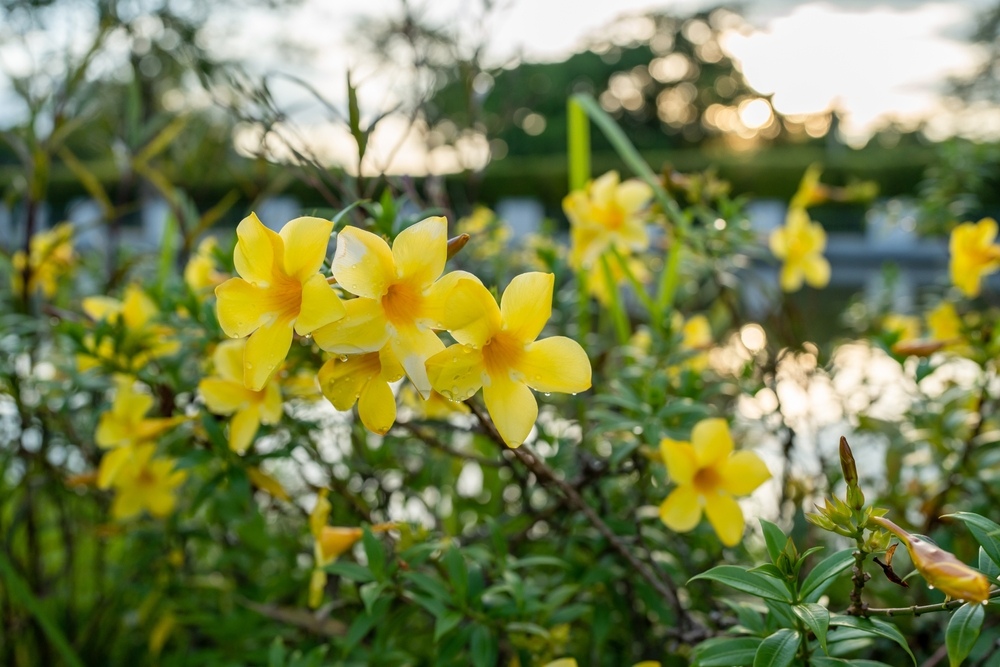
Native to the southern US, Carolina jessamine (Gelsemium sempervirens) can grow in zones 7-10. However, the former plant isn’t cold-hardy, so it’s best to plant it in zones 8 in North Carolina.
The flowering vine climbed to reach 20 feet or more. When grown outdoors as ground cover, the plant has a height of 3 feet. Carolina jessamine has many attractive ornamental features.
The foliage varies from oblong and lanceolate to cuneate (wedge-shaped). Additionally, leaves can have multiple colors, like gold, yellow, green, lavender, and burgundy.
Carolina jessamine produces funnel-shaped, yellow flowers that bloom in late winter to early spring.
For best results, plant those ornamental vines in rich, well-drained, moist soil. Additionally, feed them moderate amounts of slow-release fertilizers when the plants are actively growing.
7. Chocolate Vine
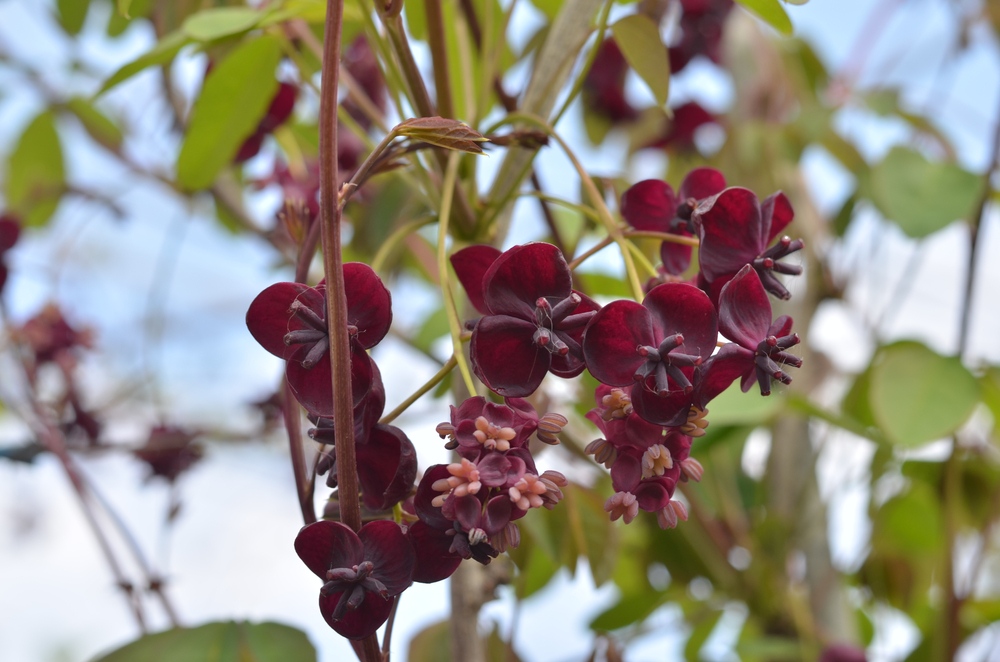
Chocolate vine, or Akebia quinata, is native to Japan, China, and Korea. The former variety is a woody vine and grows well in hardiness zones 4-8.
The native East Asian plants reach a mature size of 15-40 feet. They have elliptical to oblong leaves. The foliage color varies from green to blue and lavender.
Chocolate vine blooms in the early spring, giving small, reddish to purple, fragrant flowers. Those flowers produce cucumber-shaped, edible fruits.
Those plants require rich, well-draining soil. Make sure to water them weekly, as chocolate vines are mildly tolerant of drought. Additionally, provide at least 6 hours of direct sunlight for the plants to flower.
8. Wisteria Vine
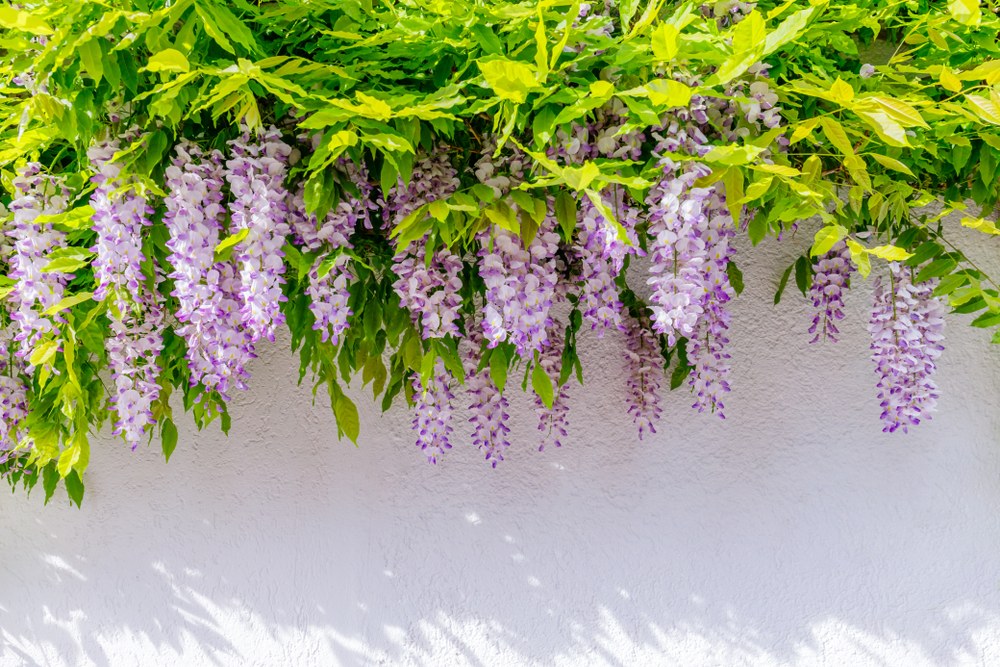
Like winter jasmine, the wisteria vine is also native to China. The breathtaking flowering vine is suitable for growing in zones 5-9.
At maturity, wisteria vines can reach 25 feet long. They produce standard elliptical and ovate green leaves with a length of 6 inches or more.
Those plants’ strikingly purple-colored flowers bloom in the spring. The former has a pea shape and sits on unbranched stalks (racemes). Unfortunately, the flowers appear after 2-3 years of planting.
Chinese wisteria is easy to grow. Simply provide full to partial sunlight and good drainage soil. You also don’t need to fertilize the plants, as those varieties can fix nitrogen from the atmosphere.
9. Clematis

The genus Clematis contains some of the most eye-catching flowering vines. It consists of 380 species. Clematis plants are native to the mild-temperature regions of the Northern Hemisphere. Consequently, they thrive in zones 4-9.
Those flowering vines’ size varies depending on the species and can be anywhere from 2 to 30 feet.
When it comes to ornamental features, plants in this genus can produce three flower forms: loose clusters, bell-shaped, and flat flowers. Petal shades can be white, blue, purple, pink, red, or bicolored.
Typically, Clematis plants bloom in February or March, but it’s possible to see flowers throughout the year.
Although they take a couple of years to establish the roots, Clematis plants are still easy to grow. Provide them with full sun, well-drained soil, and regular fertilization.
10. Climbing Hydrangea
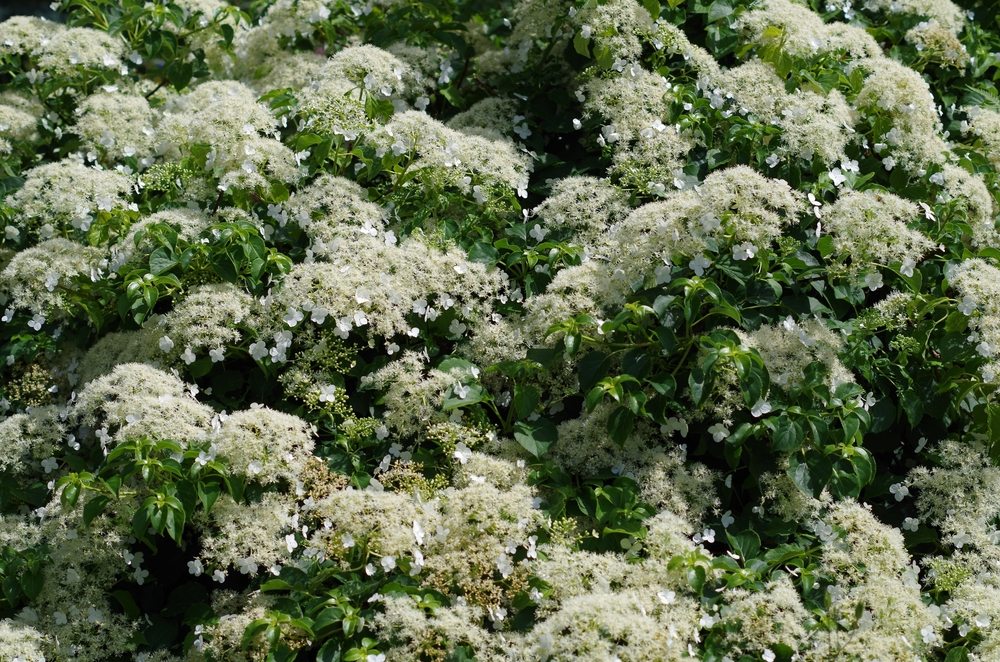
Climbing hydrangea is a deciduous flowering vine native to the woodlands of the Himalayas, China, and northern Myanmar. They thrive in hardiness zones 4-8a.
Once those climber plants mature, they reach an impressive height of 50 feet or even more! In summer, those plants produce green, ovate leaves. After 3-5 years, climbing hydrangea reaches the flowering stage. They bloom in spring and summer, producing flat, white flowers.
Like most plants on the list, climbing hydrangea thrives in full sun to part shade. In hot climates, they prefer partial or even complete shade. Plant them in rich, moist soil with a slightly acidic pH to ensure healthy growth.





